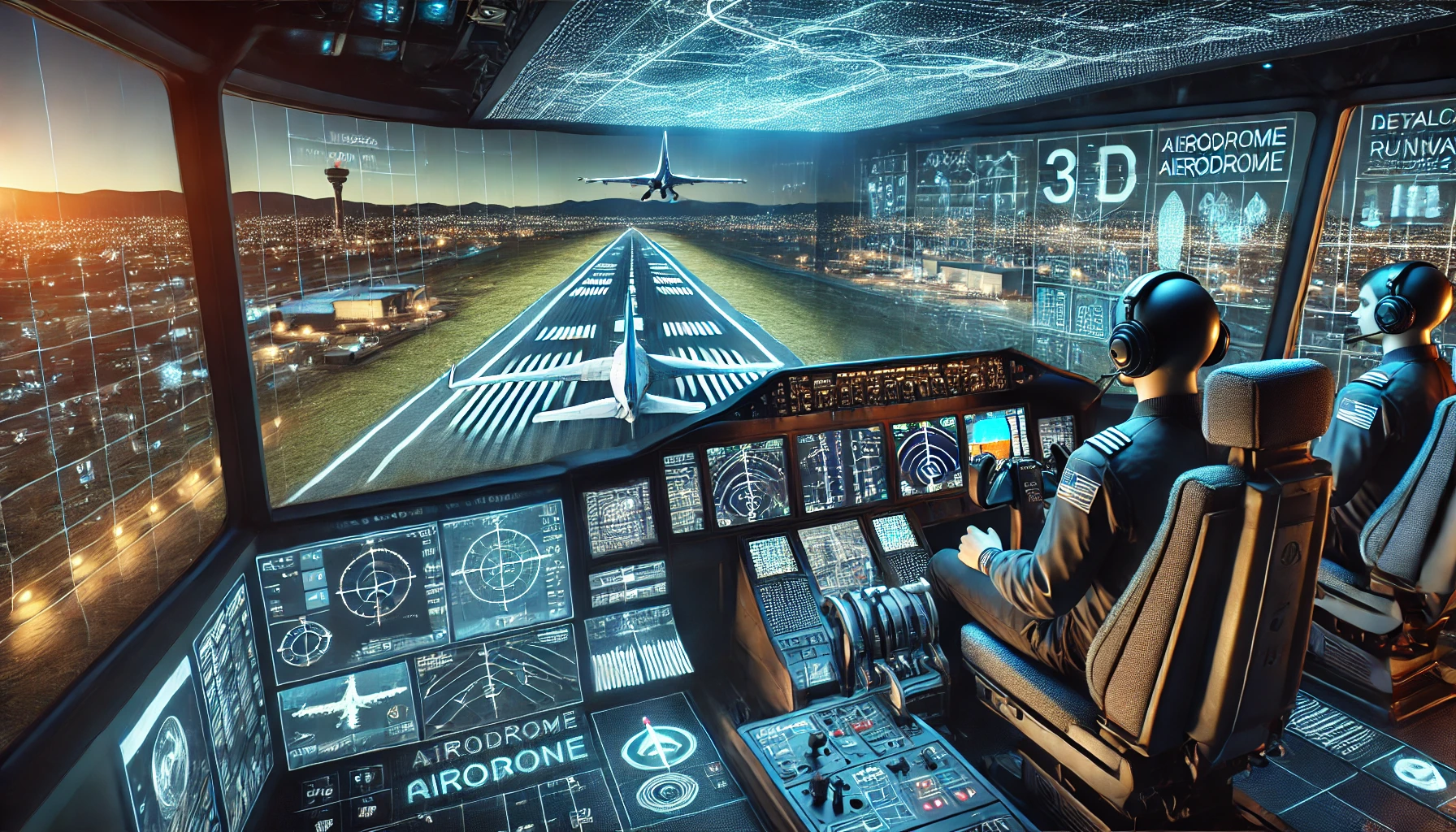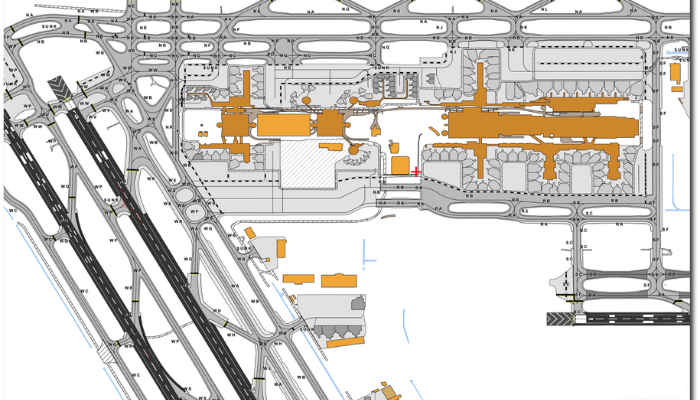Creating Virtual Runways: The Role of Aerodrome Data in Pilot Training Simulations
Creating Virtual Runways: The Role of Aerodrome Data in Pilot Training Simulations
Have you ever wondered how pilots practice landing on runways they've never seen before? Enter the world of Virtual Runway and Aerodrome Data. These digital marvels are revolutionizing pilot training, making it safer and more efficient than ever.
Imagine practicing landings at any airport in the world, all from the safety of a simulator. It's not science fiction - it's happening right now. Pilots who use flight simulators may save an average of 5-7 hours in actual flight training time. Let's explore how this technology is shaping the future of aviation.
Why Virtual Runways in Pilot Training?
Virtual Runways are changing the game in pilot training. They're not just fancy graphics - they're precise digital replicas of real-world airports. Here's why they matter:
1. Safety First: Pilots can practice tricky landings without risk. They can mess up, learn, and try again.
2. Cost-Effective: Less time in real planes means lower training costs. It's a win-win for pilots and airlines.
3. Flexibility: Bad weather? No problem. Virtual Runways are always open for practice.
4. Variety: Pilots can experience different airports from around the globe. This broadens their skills and prepares them for diverse scenarios.
But Virtual Runways aren't magic. They need accurate data to be effective. That's where Aerodrome Data comes in.
How Virtual Runways and Aerodrome Data Work Together
Now, let's see how Virtual Runways and Aerodrome Data team up to create amazing training experiences. It's like a perfect dance partner - each one makes the other better.
First, the Aerodrome Data provides the blueprint. It tells us exactly where everything is at the airport. Then, clever software uses this data to build a 3D model. This becomes the Virtual Runway that pilots see in the simulator.
But it doesn't stop there. The magic happens when pilots interact with this virtual world. They can practice takeoffs, landings, and even emergency procedures. All while getting real-time feedback on their performance.
The best part? These simulations are incredibly realistic. Pilots report feeling like they're really there. This level of immersion is crucial for effective training. It helps pilots build muscle memory and decision-making skills that transfer directly to real-world flying.
The Benefits of Using Virtual Runways in Pilot Training
Let's break down why Virtual Runways, powered by accurate Aerodrome Data, are such a game-changer:
1. Reduced Training Time: Pilots learn faster in simulators. They can repeat scenarios until they get it right.
2. Cost Savings: Less time in real aircraft means big savings on fuel and maintenance.
3. Improved Safety: Pilots can practice risky scenarios without any danger. This builds confidence and competence.
4. Environmentally Friendly: Virtual training means fewer emissions from actual flights. It's good for pilots and the planet.
5. Standardized Training: Every pilot gets the same high-quality experience, regardless of weather or aircraft availability.
These benefits are why more and more flight schools and airlines are embracing Virtual Runways and Aerodrome Data in their training programs.
Challenges in Implementing Virtual Runways
While Virtual Runways offer many benefits, they also come with challenges. Let's look at some hurdles and how the industry is tackling them:
1. Data Accuracy: Keeping Aerodrome Data up-to-date is crucial. Airports change constantly. Even small errors can lead to big problems in training.
2. Technology Costs: High-end simulators are expensive. Not all flight schools can afford them. However, prices are coming down as technology improves.
3. Regulatory Approval: Aviation authorities must approve simulator training. This process can be slow, but it's essential for safety.
4. Balancing Virtual and Real: While Virtual Runways are great, pilots still need real flight time. Finding the right mix is key.
5. Resistance to Change: Some old-school pilots prefer traditional methods. Educating them on the benefits of Virtual Runways is important.
Despite these challenges, the advantages of Virtual Runways far outweigh the drawbacks. The industry is working hard to overcome these obstacles.
Real-World Applications of Virtual Runways
Virtual Runways aren't just theory - they're making a real difference right now. Here are some exciting ways they're being used:
1. Pilot Certification: Many aviation authorities now allow simulator time to count towards pilot licenses. This makes getting certified faster and cheaper.
2. Recurrent Training: Experienced pilots use Virtual Runways to stay sharp and practice rare scenarios.
3. Airport Familiarization: Pilots can "visit" new airports before ever landing there in real life. This improves safety and efficiency.
4. Emergency Training: Virtual Runways allow pilots to practice handling emergencies that would be too dangerous to simulate in real life.
5. Air Traffic Control Training: It's not just for pilots! Air traffic controllers use similar simulations to practice managing busy airspace.
These applications show how Virtual Runways and Aerodrome Data are transforming aviation training across the board.
The Role of Aerodrome Data in Creating Realistic Simulations
Let's see into how Aerodrome Data makes Virtual Runways come alive. It's all about the details:
|
Aerodrome Data Element |
Impact on Virtual Runway |
|
Runway Dimensions |
Ensures accurate takeoff and landing distances |
|
Taxiway Layout |
Allows realistic ground movement practice |
|
Obstacle Information |
Creates true-to-life approach and departure scenarios |
|
Navigation Aid Locations |
Enables practice with real-world navigation techniques |
|
Terrain Data |
Provides realistic visual and instrument approach conditions |
Each piece of data plays a crucial role in creating a lifelike training environment. It's this attention to detail that makes Virtual Runways so effective for pilot training.
Final Thoughts
Virtual Runways and Aerodrome Data are revolutionizing pilot training. They're making it safer, more efficient, and more accessible than ever before. As technology continues to advance, we can expect even more amazing developments in this field.
Ready to explore how Virtual Runways and Aerodrome Data can transform your pilot training program? Contact us to learn more and start your journey into the future of aviation training.
FAQs
1. How accurate are Virtual Runways compared to real airports?
Virtual Runways can be extremely accurate, often within centimeters of real-world measurements. This accuracy depends on the quality of the Aerodrome Data used to create the simulation.
2. Can Virtual Runway training completely replace real flight training?
No, Virtual Runway training can't completely replace real flight experience. However, it can significantly reduce the amount of real flight time needed for training, making the process more efficient and cost-effective.
3. How often is Aerodrome Data updated for Virtual Runways?
The frequency of updates varies, but most providers aim to update their Aerodrome Data at least quarterly. Some systems even allow for real-time updates as changes occur at airports.
4. Are there any physical side effects from using Virtual Runway simulators?
Some users may experience mild motion sickness when first using high-fidelity simulators. However, most people adapt quickly, and modern systems are designed to minimize these effects.
5. How do aviation authorities view Virtual Runway training?
Many aviation authorities now recognize and approve Virtual Runway training as part of pilot certification programs. The exact regulations vary by country, but the trend is towards greater acceptance of this technology.



